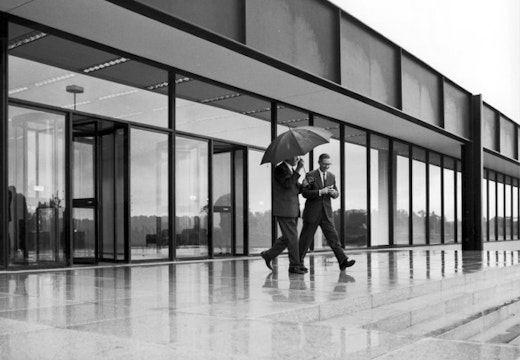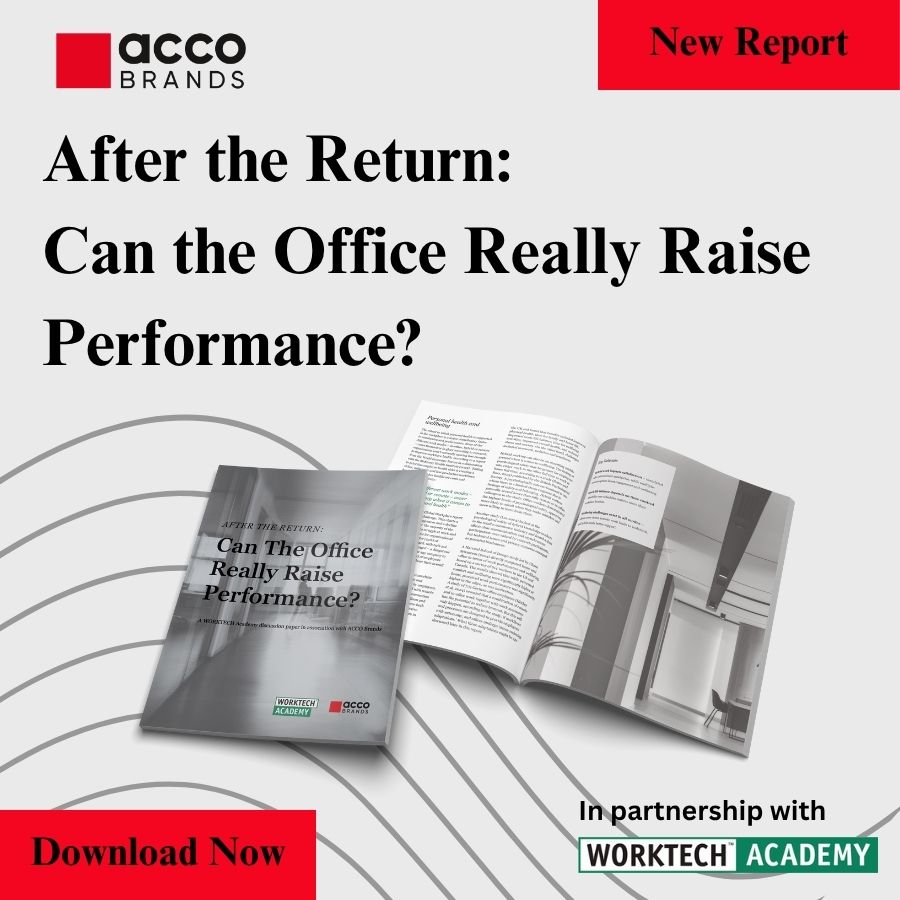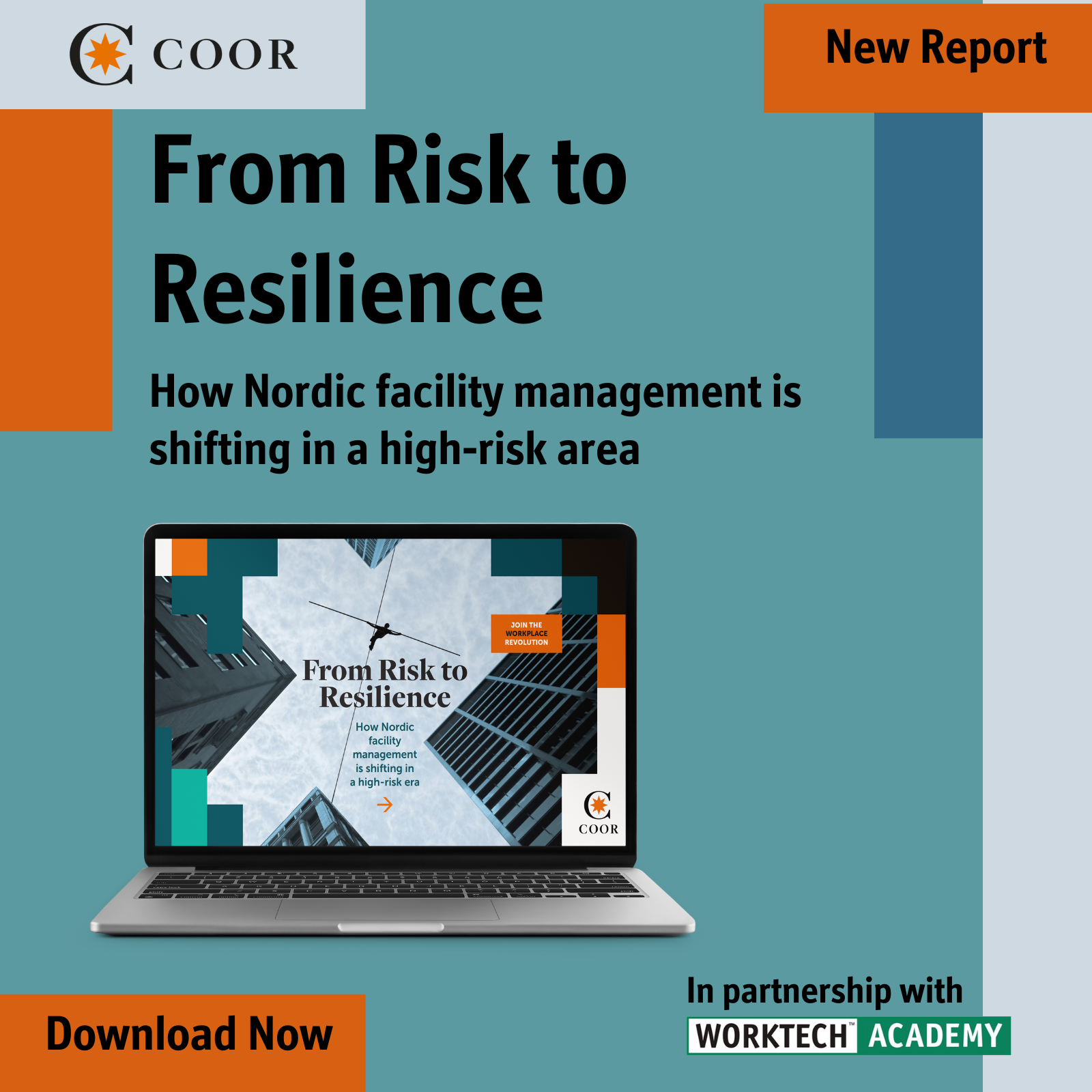Talking point: can the office rise above the doom and gloom?
It’s easy to feel down about prospects in the workplace sector. But as we gear up for final quarter of 2025, emerging trends in real estate, technology and design point to a brighter future
As the autumn looms into view and the workplace sector adopts a back-to-school vibe ahead of the final quarter of 2025, the doom scrollers are having a field day. There’s so much globally to make us anxious – from high vacancy rates and rising cyberattacks to low productivity and broader geopolitical threats.
As I write this, London is paralysed by a four-day Tube strike costing the UK economy an estimated £240 million. New research from the Chartered Institute of Personnel and Development suggests that British workers are taking more time off sick than ever before – an average UK sickness absence rate of 9.4 days a year is 60% higher than the rate of 5.9 days recorded before the pandemic. And British business titan Jaguar Land Rover has followed Marks & Spencer into crisis mode over a breach of its cybersecurity.
But before we plunge into darkness, it’s worth reminding ourselves that some of the underlying fundamentals for the sector are in better shape than the grey, menacing clouds suggest. Could it be that there are reasons for optimism in core aspects of real estate, technology and design that point to brighter days ahead?
US crisis averted?
According to a report in The Economist, the worst of the office vacancy-rate crisis in the US could be over. The evidence for this? America’s five biggest commercial property firms – CBRE, Colliers, Cushman & Wakefield, JLL and Newmark – have lifted their earnings outlooks simultaneously for the first time. The share prices of the five are up by between 20% and 39% so far in 2025. Several have hit records.
The Economist report attributes dwindling office supply as a key factor in this upturn as more redundant office blocks are converted into housing or demolished. American office space will shrink for the first time in at least a quarter of a century. Recovery in the market will slow but signs of renewed vigour among the professional service property firms are to be welcomed.
In technology, a similar sense of rebound can be seen in McKinsey’s latest analysis of equity investment in new tech trends. There was a marked upswing in 2024 on the previous year across ten of those frontier trends. Investors poured money into agentic AI and robotics while digital trust and cybersecurity, and cloud and edge computing, also made gains.
More investment in technology development and infrastructure will lead to better, more robust and more responsive workplace systems, but again we will have to be patient.
Creativity flowing
The final piece of evidence to supporting a brighter future comes from the current crop of workplace design projects and awards. It is often said that architects and designers will never let a good crisis go to waste. When the going gets tough, the creativity gets flowing.
Whether in the choice of materials, smart adaptations of space, or the layering of experience, a new wave of design solutions are addressing the various challenges of business efficiency, employee engagement and climate emergency head-on. There is currently a picture of positive action that will have a positive impact over time.
According to the latest survey of future trends from Royal Institute for British Architects (June 2025), architects are more optimistic about workloads and their revenues are rising. Commercial buildings feature strongly, not only in this business upsurge but also in the newly published RIBA Stirling Prize shortlist for 2025 – termed the Oscars of architecture.
‘A picture of positive design action that will have a positive impact over time…’
This shortlist feature Herzog and de Meuron’s Discovery Centre for pharmaceutical giant Astra Zenica in Cambridge alongside other outstanding British projects, such a new ‘vertical campus’ for the London College of Fashion by Allies and Morrison which brings together 6,000 staff and students for the first time.
Workplace design is having its moment, especially so in the UK where legendary architect Norman Foster will receive a medal for lifetime achievement in September from the London Design Festival. For many, Foster’s 1986 Hong Kong and Shanghai Bank headquarters remains one of the most influential works in the canon of workplace design. His practice remains at the forefront of the field, currently completing JP Morgan Chase’s new HQ in Manhattan which is pioneering many new ideas.
Will those green shoots of recovery in real estate, technology and design stop the doom scrollers? That’s unlikely. But at least as the days shorten this autumn, there are reasons to be cheerful amid the gloom.








